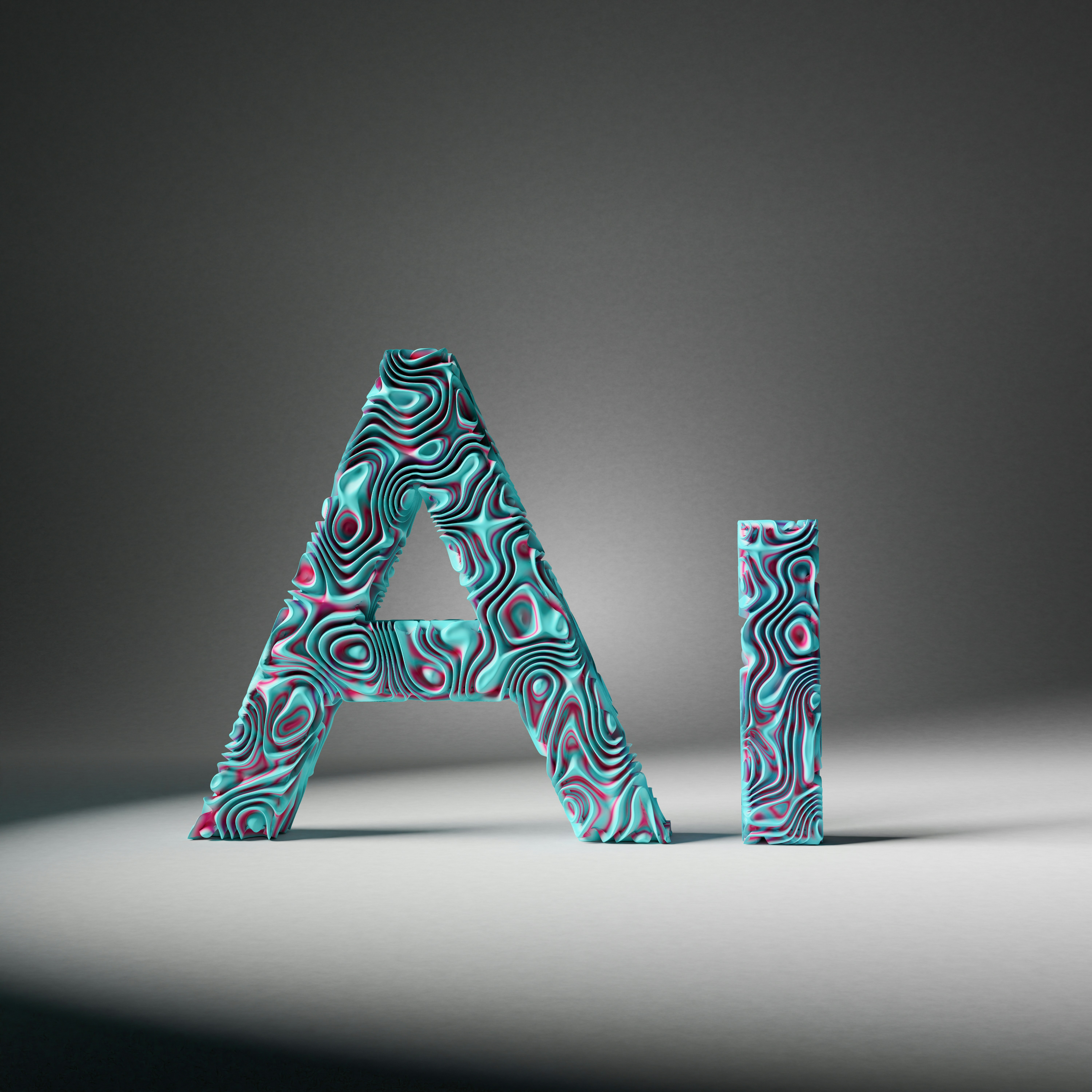Introduction
Artificial Intelligence (AI) is rapidly transforming the way websites are designed, managed, and optimised. From personalising user experiences to enhancing security, AI offers a suite of tools that make websites more efficient, engaging, and effective. Its ability to analyse data, automate processes, and adapt to user behaviour allows businesses to stay competitive in an increasingly digital world.
But can AI truly improve your website? The answer lies in how it’s utilised. Whether you’re looking to provide tailored recommendations, optimise your content for search engines, or streamline design and development, AI has the potential to elevate every aspect of your online presence. This blog explores how AI can revolutionise websites, starting with personalised user experiences and content optimisation.
Section 1: Personalised User Experience
In today’s digital landscape, personalisation is no longer a luxury—it’s an expectation. Users demand experiences that cater to their individual preferences, and AI makes it possible to deliver on this expectation. By analysing user behaviour, preferences, and interactions, AI can tailor content and recommendations to meet specific needs.
For example, consider an e-commerce website. AI algorithms can study a user’s browsing history, purchase patterns, and even time spent on particular product pages to suggest items they are most likely to buy. This type of personalisation doesn’t just improve engagement; it boosts sales by creating a more relevant shopping experience. Similarly, for content-driven websites like blogs or news platforms, AI can recommend articles based on a user’s reading habits, ensuring they spend more time on the site.
The benefits of personalisation go beyond user satisfaction. By delivering relevant content and experiences, websites can increase conversion rates, reduce bounce rates, and foster customer loyalty. Whether it’s a “Recommended for You” section or dynamic landing pages that adjust based on user preferences, AI-driven personalisation is a game-changer for modern websites.
Section 2: Content Optimisation
Creating high-quality content that resonates with your audience is essential for a successful website. However, the process of brainstorming ideas, writing, and ensuring your content aligns with search engine optimisation (SEO) best practices can be time-consuming and complex. This is where AI steps in to streamline and enhance content creation and optimisation.
AI-driven tools can analyse your target audience, identify trending topics, and suggest content ideas that are likely to engage readers. Platforms like Jasper and Grammarly go a step further by helping you refine your writing, ensuring it’s clear, concise, and impactful. These tools can even offer SEO suggestions, such as keyword placement and content length, to improve your chances of ranking highly in search engine results.
For example, an AI tool might recommend including specific long-tail keywords like “affordable eco-friendly home products” to target niche searches. It could also highlight opportunities to improve readability by breaking up large paragraphs or adding bullet points. The result is content that’s not only engaging but also aligned with the algorithms that determine search rankings.
By leveraging AI for content optimisation, websites can save time, improve quality, and ensure their messaging resonates with the right audience. Whether you’re drafting a blog post, updating product descriptions, or crafting email campaigns, AI can help you produce content that drives traffic and achieves your goals.
Section 3: Website Design and Development
Designing and developing a website can be a daunting task, especially for those without technical expertise. Artificial Intelligence (AI) has transformed this process, making it faster, easier, and more efficient for businesses and individuals alike. By leveraging AI-powered tools, users can create aesthetically pleasing, highly functional websites without requiring advanced coding skills.
Streamlining Design with AI
AI-driven platforms like Wix ADI (Artificial Design Intelligence) and Bookmark use machine learning to simplify the design process. These tools gather basic inputs about your website’s purpose, style preferences, and content needs, then generate a complete design tailored to your requirements. For instance, if you’re creating a portfolio site for photography, the AI can suggest layouts that highlight visual elements and recommend colour schemes that enhance your work’s impact.
One of the standout benefits of AI in design is its ability to ensure responsive layouts. With more users accessing websites on mobile devices, it’s crucial for your site to look and function seamlessly across different screen sizes. AI tools automatically adjust elements like font sizes, image placements, and navigation menus, creating a responsive design that delivers a consistent user experience on desktops, tablets, and smartphones.
Automating Development Tasks
Beyond design, AI can automate several aspects of website development. AI-powered tools can generate clean, efficient code, reducing the time and effort required for manual coding. For instance, platforms like GitHub Copilot can assist developers by suggesting code snippets or even completing entire sections of code based on context.
For businesses that need rapid deployment, AI significantly reduces development timelines without compromising quality. By automating repetitive tasks and providing intelligent suggestions, AI-powered tools allow developers to focus on customisation and creativity, ensuring the final website meets both functional and aesthetic goals.
Section 4: Performance Optimisation
Website performance is a critical factor in user experience and search engine rankings. Slow loading times, broken links, and inefficient designs can frustrate visitors and lead to lost opportunities. AI offers a proactive approach to monitoring and optimising website performance, ensuring your site remains fast, functional, and user-friendly.
Real-Time Monitoring and Insights
AI-powered tools like Pingdom and GTmetrix continuously monitor your website’s performance, identifying potential issues such as slow-loading pages or server downtime. These tools don’t just highlight problems; they provide actionable insights to resolve them. For instance, if your homepage is taking too long to load, the AI might suggest compressing large images or minimising JavaScript files.
Another significant advantage of AI is its ability to identify and fix broken links. Broken links not only disrupt user experience but also harm your site’s SEO rankings. AI-powered solutions can scan your website, detect these issues, and recommend or implement fixes, ensuring seamless navigation for users.
Improving Site Speed
Page load speed is one of the most critical factors affecting user engagement and retention. Studies show that even a one-second delay in load time can result in significant drops in conversions and user satisfaction. AI tools optimise your website’s speed by identifying bottlenecks, such as unoptimised images or excessive server requests. They can also automate tasks like caching and image compression, ensuring your site performs efficiently.
By integrating AI for performance optimisation, websites can deliver faster, smoother experiences that keep visitors engaged and encourage repeat visits. Whether it’s ensuring quick load times, fixing errors, or maintaining uptime, AI provides a reliable solution for improving overall functionality.
Section 5: Enhanced Security
Website security is a top priority for any business, particularly in an era of rising cyber threats. From malware to unauthorised access, the risks are ever-present. Artificial Intelligence (AI) has revolutionised website security by offering proactive solutions that protect sensitive data and maintain user trust.
Detecting and Preventing Threats
AI excels at analysing vast amounts of data in real time, enabling it to identify suspicious activities that may indicate a security threat. For example, AI can detect unusual login patterns, such as multiple failed attempts from a specific IP address, and flag these as potential hacking attempts. Tools like Cloudflare and Sucuri use AI-driven algorithms to monitor traffic and block malicious bots before they reach your site.
Moreover, AI can recognise emerging threats by learning from previous attacks. This adaptive capability ensures your website stays ahead of new vulnerabilities. For instance, an AI tool might identify a new type of malware spreading across the web and implement protective measures on your site before an attack occurs.
Safeguarding User Data
A secure website is essential for building trust with your audience, particularly if you handle sensitive information such as payment details or personal data. AI-powered solutions can encrypt data transmissions, ensuring that any information exchanged between users and your website remains secure. Additionally, AI tools can automatically detect and patch vulnerabilities in your website’s code, further reducing the risk of data breaches.
By leveraging AI for website security, you not only protect your site from potential threats but also enhance your reputation as a trustworthy and reliable business.
Section 6: Improved Accessibility
Inclusivity is an essential aspect of modern web design, ensuring that your website is usable by all individuals, including those with disabilities. AI has made significant strides in improving website accessibility, helping businesses create experiences that are both inclusive and compliant with legal standards.
Analysing Accessibility Standards
AI-driven tools like accessiBe and UserWay can evaluate your website against accessibility standards such as the Web Content Accessibility Guidelines (WCAG). These tools identify areas where your site may fall short, such as missing alt text for images, insufficient colour contrast, or unlabelled form fields. They then provide actionable recommendations to address these issues.
Automated Accessibility Features
AI doesn’t just highlight accessibility problems—it also offers solutions. For instance:
Dynamic Adjustments:
AI can enable features like text resizing, keyboard navigation, or screen reader compatibility to improve usability for users with visual or motor impairments.
Real-Time Transcription:
AI-powered tools can generate captions or transcriptions for videos, making multimedia content accessible to individuals with hearing impairments.
Voice Command Integration:
Some AI solutions enable voice navigation, allowing users to interact with your website without relying on traditional input methods.
Broader Reach and Legal Compliance
Improving accessibility not only makes your website inclusive but also expands your potential audience. By accommodating users with disabilities, you tap into a broader market while demonstrating social responsibility. Additionally, many countries have legal requirements for web accessibility, and AI helps ensure your website meets these standards, avoiding potential penalties.
Section 7: Data-Driven Decision Making
One of AI’s most powerful contributions to websites lies in its ability to analyse vast amounts of data and transform it into actionable insights. By leveraging AI-driven analytics, businesses can better understand user behaviour, optimise their strategies, and continuously improve their websites.
Understanding User Behaviour
AI-powered tools, such as Google Analytics Intelligence and Hotjar, provide deep insights into how users interact with your website. They can track metrics like time spent on pages, click-through rates, and bounce rates, helping you identify areas that are performing well and those that need improvement. For example:
AI might reveal that users frequently abandon their shopping carts on the checkout page, indicating the need for a more streamlined payment process.
Heatmaps generated by AI tools can highlight which parts of a page receive the most attention, guiding you in placing critical elements like calls-to-action (CTAs) more effectively.
Predicting Trends and Preferences
AI doesn’t just analyse past behaviour—it can predict future trends. By studying user data and market patterns, AI can anticipate what products, services, or content will resonate with your audience. This enables businesses to stay ahead of the curve and offer what their customers want before competitors do.
For example, an AI tool might suggest content topics based on trending search queries, ensuring your blog posts or articles remain relevant and timely. Similarly, AI can recommend adjustments to product offerings or pricing strategies based on consumer demand.
Informed Decision-Making
By presenting clear, data-driven insights, AI eliminates guesswork from website management. Businesses can make informed decisions about everything from design changes to marketing campaigns, ensuring their efforts align with user expectations and drive measurable results.
Conclusion
Artificial Intelligence is no longer a futuristic concept—it’s a practical tool that’s reshaping how websites are built, managed, and optimised. From delivering personalised experiences and streamlining content creation to enhancing security and ensuring accessibility, AI offers countless benefits that improve website performance and user satisfaction.
Key Takeaways:
AI personalises user experiences, increasing engagement and conversions.
Content optimisation tools save time and enhance quality, ensuring relevance and SEO alignment.
AI streamlines design and development processes, creating responsive and visually appealing websites.
Real-time monitoring and performance optimisation keep your site running smoothly and quickly.
Enhanced security protects sensitive data and builds user trust.
Accessibility solutions ensure inclusivity, expanding your audience and meeting legal standards.
Data-driven insights empower smarter decisions, driving continuous improvement.
By integrating AI into your website strategy, you not only improve its functionality and user experience but also position your business to thrive in an increasingly competitive digital landscape. Whether you’re a small business owner, a blogger, or a large enterprise, the benefits of AI are clear.
FAQs
1. How can AI improve my website’s user experience?
AI enhances user experience by personalising content and recommendations based on user behaviour. It can suggest relevant products, articles, or services, ensuring visitors find what they need quickly and easily.
2. Do I need technical expertise to use AI tools for my website?
No, many AI tools are designed for users with minimal technical expertise. Platforms like Wix ADI and Grammarly integrate AI features that are intuitive and easy to use, allowing even beginners to leverage AI benefits.
3. Is AI essential for improving website security?
While not essential, AI provides advanced security features that detect and mitigate threats more effectively than traditional methods. AI can identify suspicious activity, block malicious bots, and protect sensitive user data.
4. Can AI help make my website more accessible?
Yes, AI-driven tools can evaluate your website’s accessibility and suggest or implement improvements, such as enabling screen reader compatibility, adding alt text to images, and ensuring keyboard navigation.
5. How much does it cost to integrate AI into my website?
The cost of integrating AI varies depending on the tools and features you choose. Free and affordable AI tools are available for tasks like analytics and SEO, while advanced features like AI-driven design or security may require subscription-based services.
These FAQs address common questions about integrating AI into websites, providing valuable insights for readers. Let me know if you’d like to refine or expand them!
Sources we used to make this article:


